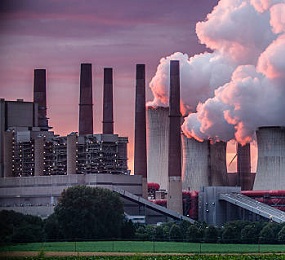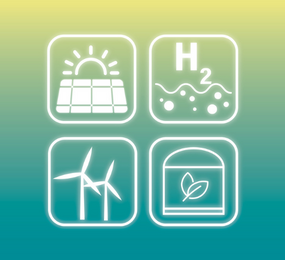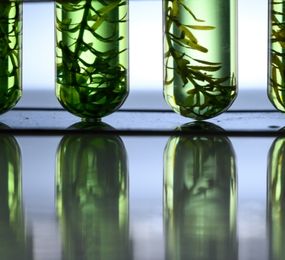Introduction
Biogas production is an eco-friendly method for energy production from biomass and the residue can be utilised to improve the soil. Biogas is produced by the anaerobic natural breakdown (Anaerobic Digestion, AD) of organic matter. Methane (CH4) and carbon dioxide (CO2), together with water and a few other gases, are the main components of biogas. These gases are created when organic matter breaks down in the absence of oxygen.
The biogas industry presents an opportunity to move away from fossil fuels, cut carbon emissions, and boost profitability. Biogas plants can assist in achieving your company's commitment to renewable energy, carbon reduction, sustainability, and a circular economy.
The Market (2022 - 2030)
COVID-19 harmed the market in 2020. The market has now returned to its pre-pandemic levels. The global biogas market is expected to grow at a CAGR of about 4.5% over the course of the forecast period, reaching 22.71 GW by the end of 2022.
The biogas market is divided into segments based on feedstock (livestock manure, sewage, food waste, crop residues, and energy crops), application (electricity generation, biofuel production, and heat generation), and geography (North America, Europe, Asia-Pacific, South America, and the Middle East & Africa).
Long-term market expansion of the biogas industry potential is anticipated to be fueled by favourable government policies and regulations. On the other hand, increasing competition from alternate renewable energy sources is expected to impede the expansion of biogas during the forecast period. Nevertheless, the biogas market is anticipated to have profitable growth throughout the forecast period due to technical improvements and innovations in the industry.
Global electricity production has steadily increased over the past ten years as a result of rising energy demand brought on by population growth, industrialisation, and urbanisation. Global electricity production increased from 21570.7 Terawatt-hours (TWh) in 2010 to 2752.52 TWh in 2021. The International Energy Agency projects that until 2030, the world's energy demand will increase by 9% annually.
According to the Europe Biogas Association (EBA), biogas potential in Europe is expected to reach 98 billion cubic metres (bcm) of biomethane by 2050.
Biogas is a crucial source of electricity generation in the power sector, which helps to achieve the global goals of the clean energy transition. The production of power from biogas is a renowned technology that is being widely used throughout the world. CHP engines are frequently used to generate electricity while recovering and using heat. ?
According to the World Biogas Association (WBA), biogas can provide renewable energy from the world's food waste, industrial production wastes, feedstocks from agriculture, and sewage while reducing global GHG emissions by 10–13%. Positive effects on electricity generation from biogas are anticipated as a result of the reduction in GHG and fuel optimization. ?
The beauty of Anaerobic Digestion (AD) is its versatility.
According to the World Biogas Association (WBA) through the pathways to 2030?, despite the near impossibility of providing a recipe that works for every nation, there are undoubtedly certain universal components that different countries can adopt. Even just educating them about the significance of collecting all the organic wastes their society creates and how AD can be used to recycle them will be a significant accomplishment.
Concerning how the biogas industry may be incorporated into their climate change policies, specifically, their Nationally Determined Contributions to maintain global warming well below 2°C, #pathwaysto2030 aims to ensure that no policymaker will be able to claim ignorance.
As the number of organic wastes rises as a result of population expansion, urbanisation, and dietary changes, they emit more and more dangerous gases that have an impact on our climate and air quality, particularly methane, black carbon (soot), and ammonia, which are released uncontrollably. This must end, and AD can make it happen right away.
Long-term security is another benefit of investing in AD. Future hydrogen technology is compatible with biogas. Green hydrogen can be created from low-carbon biomethane, and hydrogen can become biomethane when combined with the CO2 from biogas. Biogas is future-proof in this way because it can change to meet changing energy needs.
Advanced Biofuels Forum will take you towards the ideology of the generation of fuels, from the first to the second and third, consisting of the biofuels, advanced biofuels and true sustainable materials; which all have the potential to produce a cleaner energy market and industry globally.
AD enables human activity to become more in sync with nature. We need to quantify these multiple benefits.
As businesses, industries, and societies begin a green recovery in a post-pandemic world, the demand for transportation fuels is expected to rise. Biofuels are an important and reliable climate-neutral part of the solution available today – and viable for tomorrow!
Join us so you don't feel left out in the industry!
Event Name: Advanced Biofuel Forum
Event Date: 30th November - 2nd December2022
To register or learn more about the Forum please check here: https://bit.ly/3RbbmPT
For more information and group participation, contact us: [email protected]
















